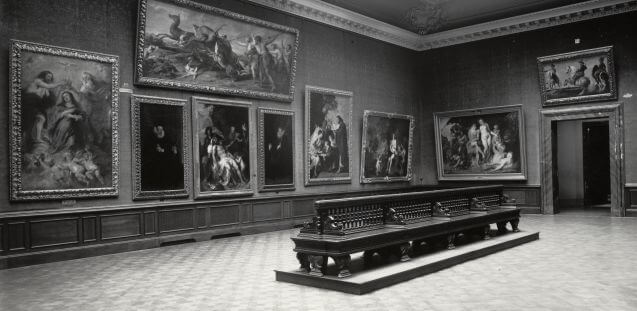When preservation fails, do we have the courage to discuss where to go next?
Opening today, 19 March 2015 at the Bode Museum is The Lost Museum, an exhibition of 70 works damaged in World War II. Bullet holes, damage to faience surfaces, and outright loss of works is juxtaposed with a discussion about conservation of this damage – do we remove the marks of a painful history to restore the artist’s original intent? Or do we maintain the physical markings as part of the object’s history, and the story about our people? As an American, I remember the first time the pall that struck me as I observed the physical marks of war on the walls of the Victoria and Albert Museum. This damage to an important facade was not repaired – how shall we consider the damage upon the collection itself?
A multi-media feature (audio available in English) at the Bode Museum’s website provides snippets of discussion about the damage or loss of each highlighted piece and arguments for or against conservation. Perhaps the most poignant is that of Francois Duquesnoy’s Amor Carving his Boy, a small cherub marked by bullet holes to the head and shoulders. The conservators contributing to the discussion both do and don’t support restoration of the piece. To see the small boy figure marred by such a violent act will say much more to audiences about how the war marked this collection more than the restored piece. Will a photograph do in this instance, to show the damage? Or must we now plan for preservation of that damage?
Many museums are hesitant to display works that have not been restored, regardless of whether the damage happened due to natural disaster, man-made disaster, or when collection stewardship doesn’t quite meet its goals. In our efforts to share behind-the-scenes museum experience with our public, we must tell the larger story of preservation.


The barracks at Hickam Air Force Base, Hawaii still has the bullet holes in the exterior of the building. This brought home to me the day of the Pearl Harbor attacks more than anything I’ve seen in a museum or movie. It made it very real.
At a time in our history when people are purposefully attacking museums, I think this is an important message to get out there. Art that has been hurt pains us like a person that has been hurt, as we are perhaps more sensitized to it since cultural institutions try to shield us from it. Bravi to the museums and institutions that show their wounded pieces.
Anne – So sorry I didn’t see your post 9 months ago. Leave it to my almost-two-year-old to discover your comment today. I had the same feeling looking at the pock-marked walls of the V&A.